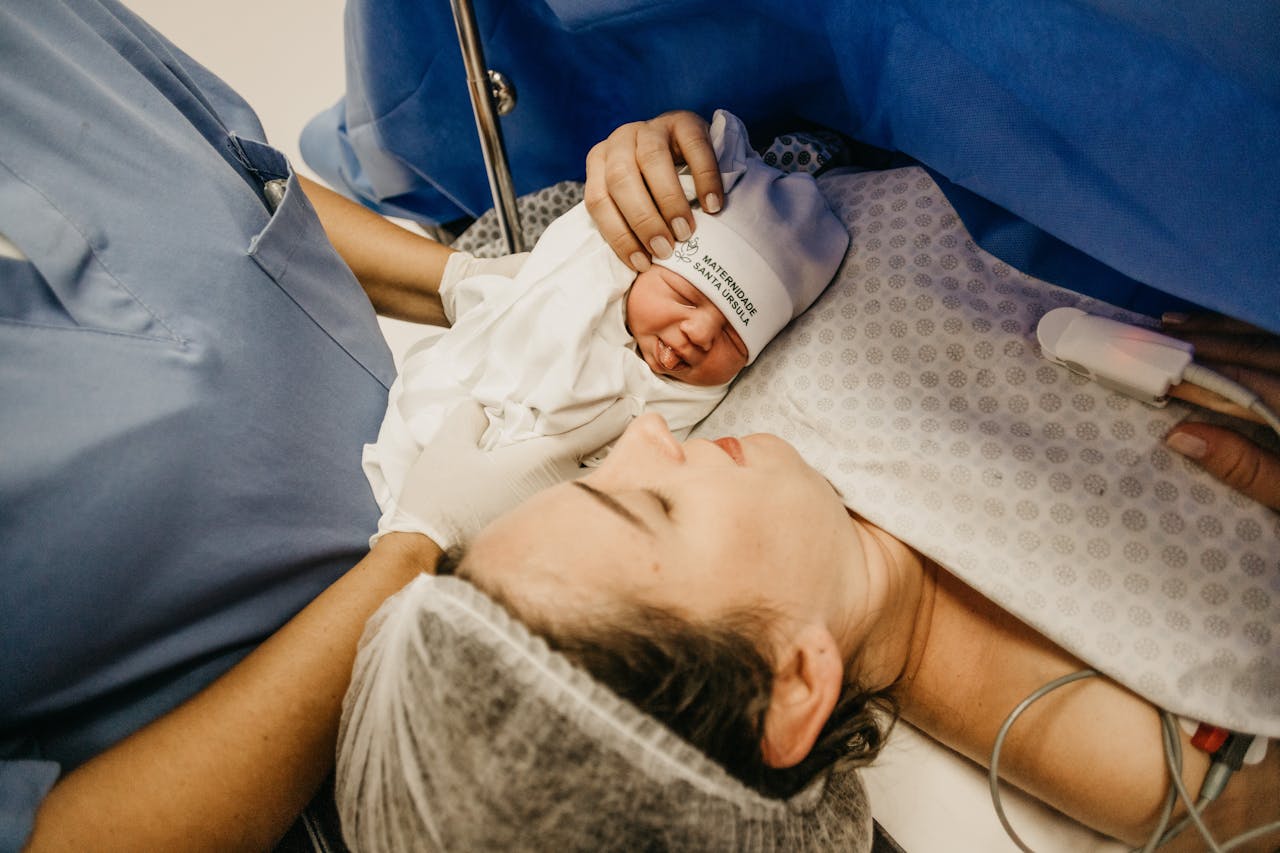Robert F. Kennedy Jr., the U.S. Secretary of Health and Human Services, stirred controversy this week after claiming that acetaminophen use in infants following circumcision could be linked to higher rates of autism. The statement, made during a cabinet meeting with President Trump, sparked immediate pushback from medical experts and public health officials.

What Kennedy Said
During the meeting, Kennedy told the president, “There’s two studies which show children who are circumcised early have double the rate of autism. It’s highly likely, because they were given Tylenol.”
He later elaborated on X (formerly Twitter), citing an August 2025 Preprints.org review that he claimed validated his interpretation. According to Kennedy, the preprint by Patel et al. argued that acetaminophen exposure, not circumcision itself, was the likely factor behind observed autism correlations in boys.
“The paper I was referring to identifies the 2015 Danish circumcision study as the most compelling standalone evidence that acetaminophen triggers autism in susceptible babies and children,” Kennedy wrote.

Kennedy said the review provided a “rigorous scientific framework” supporting his view that the risk stems from acetaminophen use in infants, not the circumcision procedure.
The Studies Behind the Claim
The 2015 Danish study, published in Journal of the Royal Society of Medicine racked nearly 343,000 boys born between 1994 and 2003. Researchers found that circumcised boys were more likely to be diagnosed with autism before age 10 compared to uncircumcised peers.
However, the authors did not investigate acetaminophen use directly. They proposed several possible explanations, including early-life stress and pain responses that could influence neurodevelopment. The study concluded that further research was needed to explore causality.
Critics called the findings “flawed,” noting that the study did not control for other painful early-life experiences, such as urinary tract infections or surgeries, which could also involve analgesic use or stress responses.
Kennedy also referenced a 2024 Irish study, which suggested that circumcised boys with autism showed some improvement in irritability, sensory sensitivity, and repetitive behaviors. The researchers additionally reported fewer urinary symptoms in circumcised boys. The findings, however, were based on a small sample size and have not been replicated.

The 2025 Patel et al. review is not yet peer-reviewed. The authors argued that evidence from multiple observational studies suggests acetaminophen could play a role in neurodevelopmental risk, but they emphasized the need for controlled clinical research before drawing conclusions.
Medical Experts Respond
Public health and pediatric experts quickly disputed Kennedy’s interpretation, emphasizing that current research does not substantiate a causal link between acetaminophen and autism. The Centers for Disease Control and Prevention and the Food and Drug Administration maintain that no proven connection exists, and acetaminophen remains among the safest pain and fever treatments when used as directed.
Dr. William Parker, a neurodevelopmental researcher at Duke University, said the evidence linking acetaminophen to autism “remains inconclusive and inconsistent.” He explained that most available data come from observational studies that identify associations, not causes. “These types of studies can identify patterns,” Parker noted, “but they can’t show whether one factor directly causes another.”

Dr. Andrea Jones, a pediatric pharmacologist at the University of California, San Francisco, told Reuters that Kennedy’s interpretation misrepresents the available evidence. “If acetaminophen were a major driver of autism risk, we would expect to see consistent, reproducible patterns across populations that correlate directly with dosage and exposure. That pattern doesn’t exist,” she said.
Dr. Katherine Hobbs, a developmental pediatrician at Boston Children’s Hospital, warned that misinformation about medication safety can have real consequences. “Parents who avoid effective pain management based on misinformation risk unnecessary suffering for their children,” she said.
Experts across pediatric medicine and toxicology agree that while exploring potential risk factors is appropriate, current evidence does not justify limiting or avoiding acetaminophen for pain or fever relief in children. Large-scale reviews published continue to find no consistent or biologically plausible mechanism linking the medication to autism.
Tylenol and Autism Research
Research into acetaminophen and neurodevelopment began gaining traction around 2013, following several observational studies suggesting potential associations between prenatal Tylenol exposure and higher rates of ASD and ADHD.
However, association is not causation. Many of those studies relied on parental recall or prescription records, which cannot prove that acetaminophen directly affects brain development. More recent analyses, including large-scale reviews by the American College of Obstetricians and Gynecologists and the European Medicines Agency, have found no convincing evidence to support a causal link.
Dr. Jeffrey Brosco, professor of pediatrics at the University of Miami, notes that millions of parents use acetaminophen safely every year. “The current data don’t justify alarm,” he said. “It’s important to interpret these findings carefully and not overstate early correlations.”
Circumcision Practices and Pain Management
Circumcision remains one of the most frequently performed surgical procedures for newborn boys in the United States, often completed within the first week of life. The approach to pain management varies by provider and cultural practice. Some pediatricians administer local anesthesia, such as lidocaine-based numbing creams or dorsal penile nerve blocks, while others rely on comfort measures including sucrose drops or swaddling. The American Academy of Pediatrics (AAP) recommends that all infants undergoing circumcision receive appropriate pain relief, underscoring that unmanaged procedural pain can have short-term physiological effects such as elevated stress hormone levels and prolonged crying.
Rabbi Nechemia Markovits, a certified mohel who has performed circumcisions for nearly four decades, told The New York Post that he has never recommended Tylenol for newborns following the procedure. “The procedure is quick and well-tolerated,” he said. “If there’s any mild discomfort, parents can use a gentle topical spray on the first day.” Markovits said families are provided with detailed aftercare guidance, and he remains available for follow-up throughout the healing period.

Hospital-based physicians note that when pain management is needed, dosing guidelines are carefully determined by weight and age. Acetaminophen, when prescribed, is typically reserved for older infants or children and administered under professional supervision. Pediatrician Dr. Laura Kauffman, who specializes in neonatal care, told Healthline that “for most healthy newborns, topical anesthetics or nerve blocks are sufficient, and systemic medications like Tylenol are rarely necessary in the immediate post-procedure period.”
In clinical settings, postoperative care emphasizes hygiene, monitoring for infection, and ensuring proper healing. Parents are generally instructed to apply petroleum jelly or antibiotic ointment to prevent the diaper from adhering to the healing site. Full recovery usually occurs within 7 to 10 days.
Although practices differ between hospitals, private clinics, and religious settings, pediatric and surgical organizations agree that when managed appropriately, circumcision is a low-risk procedure with minimal discomfort and a short recovery period. The procedure’s pain control methods continue to evolve with ongoing research aimed at improving comfort while minimizing the need for systemic medications like acetaminophen.
Rising Autism Rates
Autism spectrum disorder has become increasingly recognized in recent years as diagnostic criteria, public awareness, and early screening have improved. The Centers for Disease Control and Prevention report that about one in 31 children in the United States are now identified as being on the spectrum, a number that has risen steadily for more than two decades. Experts attribute much of this increase to better identification rather than an actual surge in cases.
Clinicians explain that diagnostic tools are now applied earlier in childhood, allowing more children to receive evaluations that previously might have been missed. Broader definitions of autism and the inclusion of related conditions have also contributed to higher counts. Dr. Catherine Lord, a clinical psychologist and autism researcher at UCLA, said, “The rise is primarily due to changes in how and when children are diagnosed, not a surge in new causes.”

Specialists emphasize that awareness campaigns and improved access to developmental assessments have made families more proactive about seeking evaluations. Early recognition enables earlier support and education, which can improve outcomes. Disparities in access to care still affect diagnosis rates, but recent data show progress in closing gaps across communities.
Genetic influences remain the strongest known contributors to autism. Family and twin studies consistently show that inherited factors play a dominant role, though environmental influences are still being studied. Researchers continue to explore how genetics interact with pregnancy-related, nutritional, or environmental factors, but no single external cause has been established. Most scientists agree that the rise in autism numbers primarily reflects diagnostic progress and social awareness rather than new or widespread environmental changes.
The Takeaway
At present, the scientific evidence does not support the claim that Tylenol causes autism—whether taken after circumcision or during pregnancy. Observational studies can raise questions, but they cannot prove cause and effect.
Parents are encouraged to follow pediatricians’ advice for pain management and to avoid self-diagnosis based on emerging or unverified claims. As Dr. Brosco emphasized, “Good science takes time, replication, and peer review—not headlines.”

While it’s valid to study the safety of common medications, Kennedy’s comments highlight a growing challenge in modern health communication: distinguishing between hypothesis and evidence. Until stronger data emerge, Tylenol remains a mainstay of safe, effective pain relief for millions of children and adults worldwide.









Leave a Reply